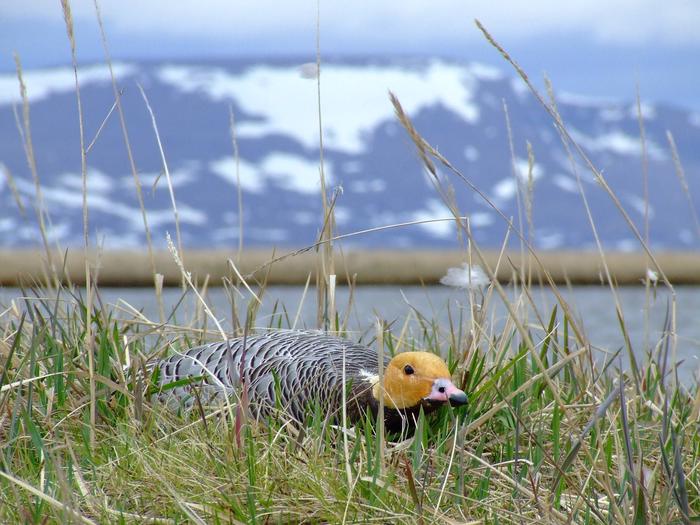Yukon Delta National Wildlife Refuge
Fish and Wildlife Service, Alaska.
Yukon Delta National Wildlife Refuge was established in 1980 to protect the wildlife and diverse habitats nestled on the delta between the mighty Yukon and Kuskokwim rivers of Alaska. Here, the tundra meets the Bering Sea. Without question, the refuge supports one of the largest aggregations of water birds in the world. A spectacle takes place every spring as millions of ducks, geese, and other water birds return to the refuge to nest. The refuge supports one of the most important shorebird nesting areas in the United States, both in density and species diversity.
Hundreds of miles of rivers and streams provide spawning and rearing habitat for 44 species of fish, including five species of Pacific salmon. Drier upland habitats harbor populations of brown and black bears, caribou, moose, wolves, and muskox. Along the coast of the refuge, the Bering Sea hosts a variety of marine mammals, including whales, which pass through during migration.
In the interior, the Andreafsky wilderness protects a large expanse of alpine and wetland tundra. An abundance of moose, fox, martens, wolverines, caribou, black and brown bears thrive. The Andreafsky River and the East Fork, a designated Wild and Scenic River, traverses 198 miles of this Wilderness area.
This landscape is the ancestral home of the Yup’ik, Cup’ik, and Deg Xit'an people of Alaska. The region is rich in culture, and residents depend on wild lands, waters, and wildlife to support an active subsistence way of life. The Yukon-Kuskokwim Delta is among the most populated rural areas in Alaska, with over 50 Alaska Native communities.
Nearby Activities
- Boating
- Fishing
- Hunting
- Interpretive Programs
- Visitor Center
Directions
You cannot drive to the refuge since no roads lead into Bethel, the location of the refuge headquarters. Various airlines provide regular commercial flights to and from Bethel. Upon arriving in the airport in Bethel, drive 2 miles along one of the few paved road in town, the Chief Eddie Hoffman State Highway, to the refuge office and visitor center which is located across from the hospital (a structure known locally as the "yellow submarine"). From Bethel, most non-local visitors travel into the refuge by small aircraft.

